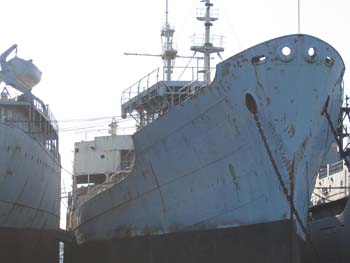USS Taluga (AO-62) (T-AO-62) (Non-retention)
The USS Taluga was an Ashtabula-class fleet oiler acquired by the U.S. Navy during World War II. It served primarily in the Pacific Ocean Theatre of Operations and provided fuel to combat ships during World War II, the Korean War, and the Vietnam War. Taluga was laid down under a Maritime Commission contract (MC Hull 728) on December 23, 1943 at Sparrows Point, Maryland, by the Bethlehem Steel Co. It was launched on July 10, 1944 and delivered to the Navy at Norfolk, Virginia, on August 25, 1944 and was commissioned there that same day. The ship had a long and distinguished career. On May 4, 1972, the oiler was decommissioned and turned over to the Military Sealift Command and designated USNS Taluga (T-AO-62). The vessel remains noteworthy because it served as the first civilian-crewed oiler in the Navy’s Military Sealift Command (MSC). The crew of the ship, the “Taluga Tigers,” set the standard for all civilian-manned naval auxiliaries to the present. Taluga earned four battle stars for World War II service, four battle stars for Korean War service, and six campaign stars for Vietnam War service. The ship entered the Maritime Administration’s Suisun Bay Reserve Fleet on November 22, 1983.
Maritime Administration - California SHPO Memorandum of Agreement
Naval History and Heritage Command Dictionary of American Naval Fighting Ships

